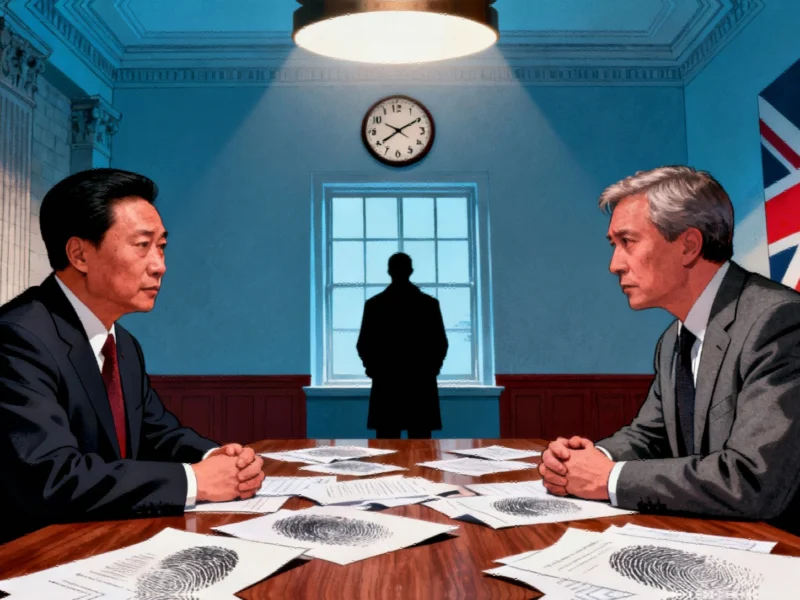High-Stakes Diplomatic Moves Amid Rare Earths Crisis
US Treasury Secretary Scott Bessent is scheduled to hold critical talks with Chinese Vice-Premier He Lifeng next week in Malaysia, following a telephone conversation planned for Friday evening. These discussions come at a pivotal moment in US-China relations, with the rare earths dispute threatening to derail a planned summit between Presidents Donald Trump and Xi Jinping in South Korea. The diplomatic engagement represents a crucial opportunity to de-escalate tensions that have been mounting since China announced sweeping export controls on rare earth minerals and critical materials.
The timing of these talks underscores the gravity of the situation, as both nations appear to be digging in their positions. Trump has characterized China’s export restrictions as a “substantial unprovoked escalation,” while simultaneously threatening to impose additional 100% tariffs on Chinese goods. This would bring the average levy to 157%, exceeding even the previous high of 145% implemented earlier this year before the Geneva truce.
The Global Supply Chain Implications
China’s export controls, set to take effect December 1, target materials essential for numerous high-tech industries, including electronics, renewable energy systems, and defense applications. The move has sent shockwaves through global manufacturing sectors that depend on stable access to these critical resources. The restrictions come amid broader industry developments that are reshaping international trade dynamics and supply chain management.
Bessent’s comments suggesting that Xi Jinping may have been unaware of the rare earths action have been met with skepticism by China experts and former officials. Wendy Cutler of the Asia Society Policy Institute noted that “the notion that a longtime experienced and internationally respected Chinese trade negotiator would ‘go rogue’ in talks with the US is not credible,” indicating that Li Chenggang, the trade negotiator under He Lifeng, was likely acting under instructions from senior leadership.
Economic Warfare or Strategic Positioning?
The current standoff represents more than just a trade dispute—it reflects fundamental differences in economic philosophy and strategic competition. In recent statements, Bessent questioned China’s approach, suggesting that “maybe there is some Leninist business model where hurting your customers is a good idea,” while emphasizing that China, as the world’s largest supplier, would suffer the most from any global economic slowdown resulting from the restrictions.
China has countered these accusations by pointing to what it characterizes as US hypocrisy, noting that the Trump administration has continued aggressive actions against Chinese companies since the last Bessent-He meeting in Madrid. This escalation occurs against a backdrop of rapid related innovations in transportation and manufacturing that are transforming global commerce.
Broader Technological Context
The rare earths dispute intersects with several critical technology sectors where both nations are competing for dominance. As recent technology assessments indicate, artificial intelligence and advanced computing systems depend heavily on the very materials now subject to export controls. This connection highlights how trade tensions increasingly revolve around control of technological infrastructure and capabilities.
Meanwhile, the business community continues to navigate these turbulent waters, with companies exploring new approaches to market trends and customer engagement despite the uncertain regulatory environment. The current situation demonstrates how geopolitical factors are increasingly influencing commercial strategies across multiple sectors.
Potential Outcomes and Global Impact
Several sources familiar with internal US government discussions about responding to China’s actions expressed pessimism about Beijing reversing course on the export controls. The situation remains highly fluid, with Trump indicating he might move up the timeline for implementing countermeasures from November 1 to an earlier date.
Despite the tensions, Trump struck a somewhat optimistic note about the potential Xi meeting, stating “It looks like it’s going forward. They want to meet. We like to meet. I have a very good relationship with President Xi and we’re going to see what happens.” This diplomatic dance occurs as trade officials prepare for critical negotiations that could determine the direction of the world’s most important economic relationship for years to come.
The coming weeks will be crucial for global economic stability as these two economic giants navigate their differences. The outcome of the Bessent-He discussions could either pave the way for a diplomatic resolution or signal a new phase of economic confrontation with far-reaching consequences for international trade and supply chains worldwide.
This article aggregates information from publicly available sources. All trademarks and copyrights belong to their respective owners.
Note: Featured image is for illustrative purposes only and does not represent any specific product, service, or entity mentioned in this article.



